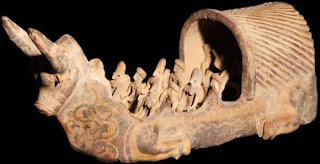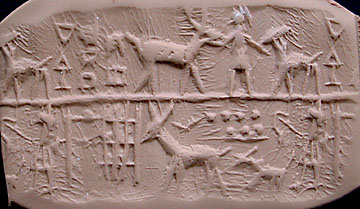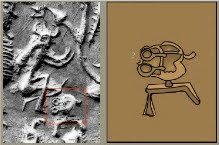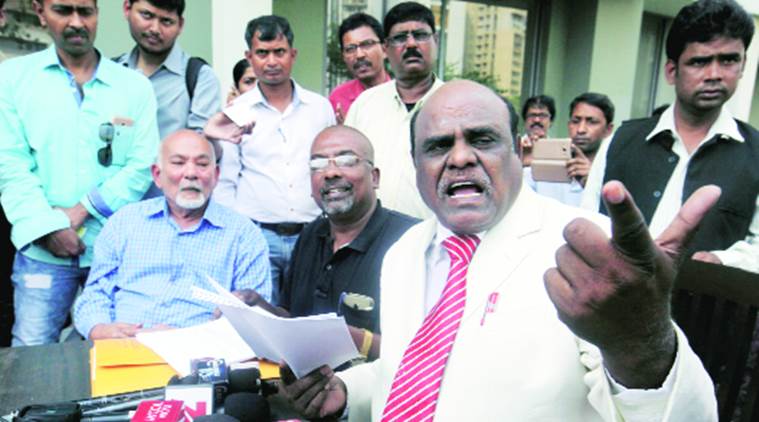Nature loving Indic traditions should not tread the path of western materialism which is enforced by a greedy god and his urge to consume the earth's resources.
by Michel Danino 14 April 2017
![Nature in Indian and Western Traditions]()
![Michel]() Born in 1956 at Honfleur (France) into a Jewish family recently emigrated from Morocco, from the age of fifteen Michel Danino was drawn to India, some of her great yogis, and soon to Sri Aurobindo and Mother and their view of evolution which gives a new meaning to our existence on this earth. In 1977, dissatisfied after four years of higher scientific studies, he left France for India, where he has since been living. A writer of numerous books including the bestseller, The Lost River: On The Trail of the Sarasvati, he is currently a member of ICHR and a visiting professor at IIT Gandhinagar. The Government of India awarded him the Padmashri (India's fourth highest civilian award) for his contribution towards Literature & Education. -
Born in 1956 at Honfleur (France) into a Jewish family recently emigrated from Morocco, from the age of fifteen Michel Danino was drawn to India, some of her great yogis, and soon to Sri Aurobindo and Mother and their view of evolution which gives a new meaning to our existence on this earth. In 1977, dissatisfied after four years of higher scientific studies, he left France for India, where he has since been living. A writer of numerous books including the bestseller, The Lost River: On The Trail of the Sarasvati, he is currently a member of ICHR and a visiting professor at IIT Gandhinagar. The Government of India awarded him the Padmashri (India's fourth highest civilian award) for his contribution towards Literature & Education. -
I lived in the Nilgiri hills of western Tamil Nadu for over two decades, and as a beautiful tropical rainforest—a Shola, as it is called—was getting ruthlessly destroyed at our doorstep, I could not help getting dragged into forest conservation. The unrelenting sound of machetes and axes chopping down young trees while the appointed ‘guards’ were busy collecting bribes was not something I was capable of putting up with. As a result, in the early 1980s I launched into a sustained campaign, first applying considerable pressure on a Forest Department unwilling to act, unwilling even to acknowledge that the situation was serious. The pressure grew to such heights that when a sincere officer happened to be in charge of our area—a white sheep among the black—a lot could be achieved in a short time, including the creation of a ‘watchdog committee’ made up of local citizens, to whom the charge of protecting the forest was promptly devolved.
Our motivation made up for our lack of resources, and in a few years we had spread awareness among the local communities to an extent we could only have dreamed of earlier. This success story, which no official organ ever highlighted, as it sprang from a severe critique of the Forest Department’s disabilities and blind policies, got diluted when newer officials silently resisted our work, forcing me to resign in protest—a classic tale in India’s official mythology. Shortly afterwards, in 2003, I left the Nilgiris to settle near Coimbatore, and the watchdog committee survived in name only.
While it was active, we used to be sent high officials so we would show them around the forest and explain our work to them. I invariably observed how most of them were unaware of what constitutes a forest, even though they were supposed to have some academic learning and a considerable field experience; if they saw tall standing trees and some greenery around, they decided that the forest was in good shape. No one noticed the wide gaps in the canopy, the missing generations of younger adult trees, or the rapid spread of exotic weeds in the undergrowth. This inability to grasp reality is probably the privilege of every bureaucracy on the planet, but it is particularly acute in India.
Sometime in the late 1990s, it was the turn of a retired Principal Chief Conservator of Forests of the Tamil Nadu government, on a private visit to ‘our’ forest. While a few of us walked him around the main bridle path (no such visitor ever asked to be taken deeper inside the forest), we engaged in a conversation about forest preservation, in the course of which he made a few startling statements. ‘Overprotection’, as he called it, could be undesirable, and some degree of woodcutting was not necessarily bad; also, forests sometimes needed fires to induce regeneration, sprouting of new seeds, clearing of undergrowth, etc. When I politely expressed scepticism, he revealed the source of his information: he had seen this explained in a programme of Discovery Channel.
This calls for two kinds of comment.
The first is that the programme the retired PCCF had watched must have been referring to coniferous forests such as those of North America’s west coast, which are dominated by pine, fir, spruce, etc. In the course of ages, those forests have adapted to natural fires caused by lightning (although not to the now far more frequent and destructive man-made fires). However, that has no bearing on tropical evergreen rainforests such as those of the Western Ghats, which thrive in a perpetually moist milieu (provided their canopy is in good shape); here, any forest fire would be irreversibly destructive. As for ‘overprotection’, anyone familiar with forest conservation in India will be hard put to show where that is taking place. Was the retired PCCF sending us a not-so-subtle message that we were not really needed? However that may be, the fact is that rainforests of the Western Ghats, including the Shola forests of the Nilgiris, have evolved over millions of years, and till the last century or so, had to suffer almost no human interference—which is the same as absolute protection. It would be standing reality on its head to assert that illicit cutting, the kind of which has led many of our forests to their present degraded condition, especially near densely populated areas, has done them any good.
Discovery or Rediscovery?
My second reflection is of a deeper nature. No one will deny the quality of some programmes on Discovery or other such channels, the beauty of the images, their informative and educational value. But no amount of such programmes will help us cultivate a real contact with nature: you cannot ‘learn’ nature the way you learn English or science or the latest news. Moreover, such programmes can only, at best, reflect the minds of Western environmentalists of scientific bent. They have no doubt done a remarkable and often courageous work in the last few decades, but they do not have the monopoly of an understanding of nature. In fact, they often forget that science is not necessarily the best tool to understand nature—if it were, why should it have wreaked so much destruction on this earth in the span of just two centuries, a mere flash in the planet’s life?
If we are to understand the roots of this phenomenon, we must study how the Judeo-Christian tradition broke away from nature and began regarding her as so much inanimate matter to be exploited (a polite word for plunder). That unfortunate attitude, which has resulted in much of the ruthless abuse we see all over the world, can be traced all the way to the Old Testament and to Genesis. On that fateful sixth day, Jehovah (or Yahweh) proclaims, ‘Let us make man in our image, in our likeness, and let him rule over the fish of the sea and the birds of the air, over the livestock, over all the earth, and over all the creatures that move along the ground.’ And he said to newborn man, ‘Fill the earth and subdue it’.1 Jehovah does not stop there; for some mysterious reason, he seems to hold the earth responsible for man’s sins. After generously cursing various nations through a succession of fire-spewing prophets, he turns his wrath to our poor planet: ‘Say to the southern forest: “This is what the Sovereign Lord says: I am about to set fire to you, and it will consume all your trees, both green and dry. The blazing flame will not be quenched.” 2 ‘I will make the land of Egypt a ruin and a desolate waste among devastated lands.’3 ‘See, the Lord is going to lay waste the earth and devastate it; he will ruin its face and scatter its inhabitants. ... The earth will be completely laid waste and totally plundered.’4 ‘Cursed is the ground because of you.’5 And so on, Book after ranting Book.
The contrast with the ancient Indian attitude is as stark as could be. Indian tradition regards the earth as a goddess, Bhúdeví; her consort, Vishnu, the supreme divinity, incarnates from age to age to relieve her of the burden of demonic forces—sometimes of humanity itself. This he does out of love for the earth, his companion. Sítá, as his wife when he is Ráma, means ‘furrow’, and she returned to the earth whence she came. Shiva, too, is bound to the earth through Párvatí, daughter of Himavat or the Himalayas. Earth and Heaven are therefore inseparable: ‘Heaven is my father; my mother is this vast earth, my close kin,’ says the Rig Veda.6 Earth is as sacred as Heaven, since she is our mother—not a dead heap of ‘natural resources’. Nature, rather than an adversary to be conquered and despoiled, is our best defence: ‘Blue water, open space, hills and thick forests constitute a fortress,’ proclaims Valluvar in the Kural (742). Rivers from Gangá to Sarasvatí and Káverí are goddesses (the Brahmaputra, of course, is a rare god among them), mountains from the Himalayas to the Vindhyas are god. Many trees are regarded as sacred (the pipal and the neem have been so since the Indus Valley civilization at least); so are many smaller plants and flowers too, such as those used in rituals, and although all animals are in principle sacred, some, from the cow to the peacock, are more so than others. The whole of nature is seen as pervaded with the divine Spirit.
Such, of course, was the view of most of the ancient world, from the Greeks (for whom the earth was Gaia and Demeter) to the Norsemen, the Mayas and Aztecs, and the Red Indians. But all those cultures were wiped out by the steamroller of the Christian advance, to which any worship of nature was ‘Pagan idolatry’ (which is also the attitude of Islam).
Strangely, even in India the sages of old had foreseen a waning of this communion with nature. During the Kaliyuga, our present Dark Age, one of the many signs of growing chaos, according to the Shiva Purána, is that the merchant class ‘have abandoned holy rites such as digging wells and tanks, and planting trees and parks.’7 Note how such simple acts of nature conservation were regarded as a ‘holy rite’, a sacred activity. The new religion of utilitarianism is the cause of this steep decline, yet we can see something of that reverence subsist in some aspects of Indian life, from the ‘sacred groves’ still found near some villages to the bhúmi pújá conducted at the start of any construction. Even borewell contractors often perform a brief ceremony or prayer before drilling the earth (though they perhaps pray for their money not to go waste).
So if to Westerners nature is a ‘discovery’, we Indians only need to rediscover and revive the old spirit and infuse it into modern methods, including scientific ones. In doing so, we should remember that science is no more than a tool, and a dangerous one as we now know—dangerous when its awesome power is harnessed to our endless greed. We will be able to use it rightly only if we keep alive in our hearts and minds our true relationship with our material mother. And if we must certainly take a leaf out of Western ecologists’ book as regards their sense of commitment and their effectiveness in getting a number of measures adopted, on the other hand, they could also—and a few do—imbibe with benefit something of the ancient Indian approach. The two together would work wonders.
Subduing the Earth
Our facile misconception that ‘all religions teach the same truths’ makes it necessary to repeat how, in the Old Testament, Jehovah explicitly makes man the master of all other species and asks him to ‘rule over all creatures’. This mandate was the seed of the Judeo-Christian ‘smash-and-grab’ attitude towards other species, something regarded as a God-given right (except that we should call it ‘Jehovah-given’ to avoid confusion).
Jehovah, always prompt to cursing humanity for its supposed sins, seems to hold the earth responsible for them—else, why should he so constantly threaten to bring desolation and ravage upon it? This fury at the earth, which he claims to be his own creation, is inexplicable. Or those who try to justify it often repeat the old story of the original sin: man’s rebellion against Jehovah fully justified the latter’s divine ‘wrath’. But why should poor Earth suffer for man’s supposed sins? Moreover, the very notion of original sin admits of a gulf between the creator and the creation. In the Indian Vedic conception, which is older than the Bible even by the most conservative estimate, there is no ‘original sin’, no fall, no rebellion against the creator, no cursing of humanity or of the earth; there is only one divine universe: ‘Truth is the base that bears the Earth,’ says the Rig Veda.8
Enlightened Western thinkers have condemned this notion of a fatal divorce brought about by the Bible between God on one side and his creation on the other. From Voltaire to Jefferson, from Thomas Paine to Gore Vidal, many have pointed out that no such divorce existed in ‘Pagan’ or pre-Christian conceptions. Let me quote just one recent instance, that of Pierre Thuillier, who writes in 1995:
Christian theology defined a conception of nature perfectly adapted to technicist ambitions. As a matter of fact, in Paganism, natural realities were perceived to be living, inhabited by ‘souls’. ... A spring (or a tree) was not reduced to a physical reality, a material reality. It was something more, an entity with a life of its own. It was therefore perfectly natural for a spring to be respected and even revered. It was seen as a marvellous manifestation of Nature, herself regarded as living. The Earth, let us recall, was also perceived as one great organism; the Greeks called her ‘Mother Earth’. Even minerals appeared endowed with a certain life, and all individual existences mysteriously associated with one another amidst the Whole, of which humanity itself was but one fragment.
With Christianity, a supposedly ‘superior’ religion, that attitude towards nature was totally disqualified. Henceforth, it was forbidden to revere springs as if they had a dignity of their own. People’s whole adoration had to be turned to the Christian God and to him alone. ... It is true that nature, created by God, retained a certain spiritual value. But a radical transformation had taken place: earth, air, water and fire, now theologically stripped of all ‘soul’, were no more than objects which Homo technicus was free to manipulate as he wished. ... Through its doctrine, the Judeo-Christian tradition somehow legitimized officially the most daring technical enterprises.9
Another recent example is Edward Goldsmith, founder-editor of the famous magazine The Ecologist. In an interview, he explained:
The Bible makes man the centre of the universe, since it assigns to him the role of ‘subduing’ the Earth. ... The religions of the Book went astray the moment they allowed a bipolar relationship to be established between God and men, then between men and Nature. ... I believe we should go back to forms of cosmic religiosity as they existed before the advent of the great monotheistic religions.10
Indeed, we shall not find in the whole Bible or the whole Koran a single passage echoing the pre-Christian world’s reverence for the Earth as a sacred, divine being of which we are all a part. Moving away from India, let us turn to the Native Americans, with a few sentences from Chief Seattle’s 1855 speech to a White governor who had come to ‘purchase’ (in reality to grab) huge tracts of his clan’s lands:
What is it that the White Man wants to buy, my people will ask. It is difficult for us to understand.
How can one buy or sell the air, the warmth of the land? That is difficult for us to imagine. If we don’t own the sweet air and the bubbling water, how can you buy it from us? Each pine tree shining in the sun, each sandy beach, the mist hanging in the dark woods, every space, each humming bee is holy in the thoughts and memory of our people. ... Every part of this soil is sacred in the estimation of my people. ...
We are part of the earth, and the earth is part of us. The fragrant flowers are our sisters, the reindeer, the horse, the great eagle our brothers. ...
We know that the White Man does not understand our way of life. To him, one piece of land is much like the other. He is a stranger coming in the night taking from the land what he needs. The earth is not his brother but his enemy, and when he has conquered it, he moves on. ... He treats his mother the Earth and his Brother the sky like merchandise. His hunger will eat the earth bare and leave only a desert. ...
Your God is not our God! ... Our people are ebbing away like a rapidly receding tide that will never return. The White Man’s God cannot love our people, or he would protect them.
...
But why should I mourn at the untimely fate of my people? Tribe follows tribe, and nation follows nation, like the waves of the sea. It is the order of Nature, and regret is useless. Your time of decay may be distant, but it will certainly come, for even the White Man ... cannot be exempt from the common destiny.
We may be brothers after all. We will see.11
‘Your God is not our God’ is a statement that calls for deep reflection. Should we invoke an earth-cursing, self-confessed jealous and angry god, or an earth-loving and earth-saving one? For the moment, let me hope that Mother Earth will not, in turn, curse us too harshly, deserved though her curse would be.
***
References
1. Genesis, 1: 26 & 1: 28.
2. Ezekiel, 20: 47.
3. Ibid., 29: 10, 12.
4. Isaiah, 24: 1, 3.
5. Genesis, 3: 17.
6. Rig-Veda, 1.164.33.
7. Shiva Purána, II.1.24, The Shiva Purana, Motilal Banarsidass, Delhi, 1970-86, vol. 1, p. 37.
8. Rig-Veda, 10.85.1.
9. Pierre Thuillier, La Grande Implosion: Rapport sur l’effondrement de l’Occident 1999–2002, Fayard, Paris, 1995, p. 251.
10. Edward Goldsmith in Krisis, Paris, no. 20–21, November 1997, p. 29. (Translation from the French is mine.)
11. Chief Seattle’s 1855 speech, available in many publications and websites. (Note that while there is disagreement on the authenticity of some of the statements, there is no dispute that Chief Seattle’s message had a profound ecological importance.)
- See more at: http://www.pragyata.com/mag/nature-in-indian-and-western-traditions-346#sthash.TGweQxzt.dpuf


















 (E. Douglas van Buren.
(E. Douglas van Buren. 



 kole.l
kole.l Ficus benghalensis
Ficus benghalensis

































